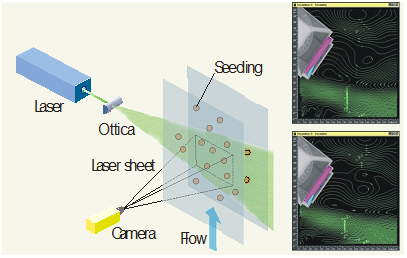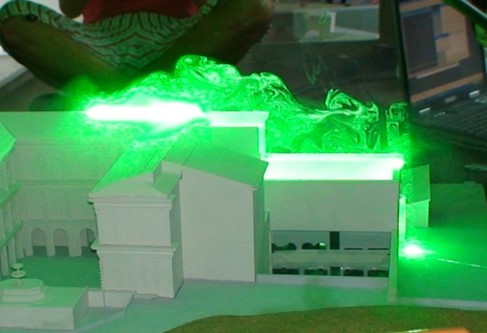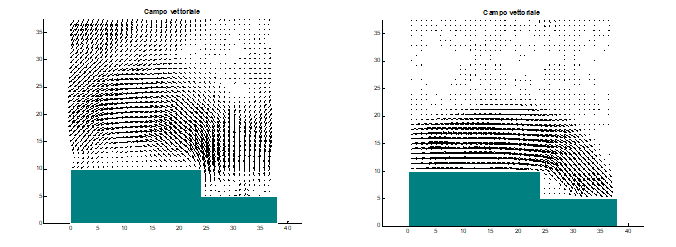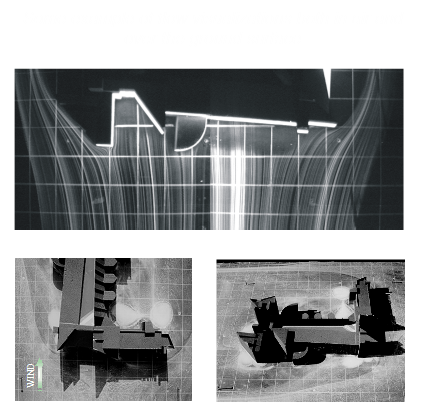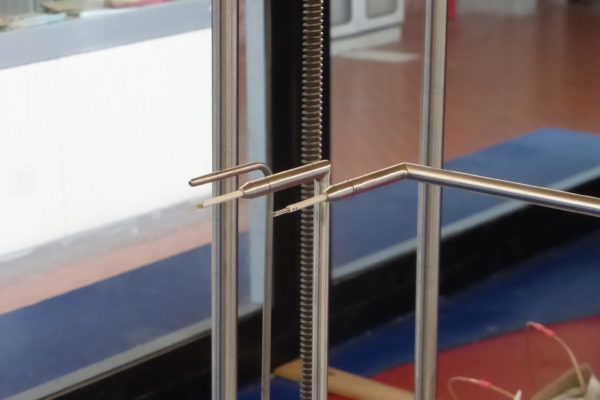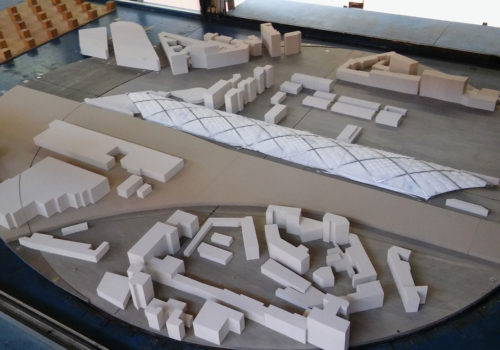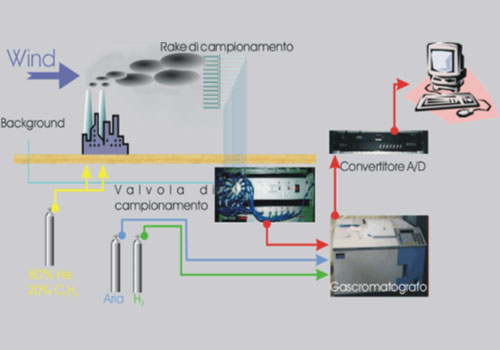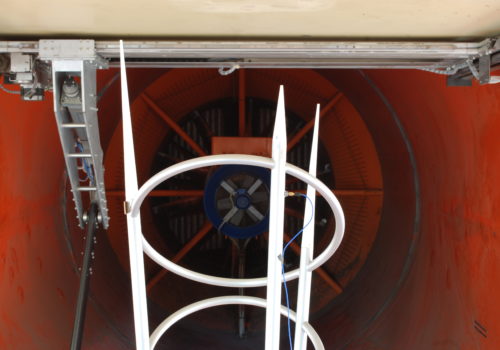Flow visualization techniques allow to obtain a complete description – even if only from a qualitative point of view – of the flow field around an obstacle. A tracer gas is inserted in the flow so that particles become visible when lighted by a lighting sheet. In this way a transversal or longitudinal section of the flow is obtained at a given location, then evidencing local flow patterns. Tracers are normally based on the vaporization after combustion of mixtures of some mineral oils.
The lighting sheet is obtained by passing the light of a 1000 W arc-lamp through a small slit.
More complex visualizations can be obtained by using the PIV (Particle Image Velocimetry), technique, where a pulsed laser sheet is used and several couples of images are logged by means of a high-sensitivity camera at a frequency of 30 Hz.
The couple of images are correlated by means of an hardware device, and a suitable software allow to on-line reconstruct the bi-dimensional flow field.
